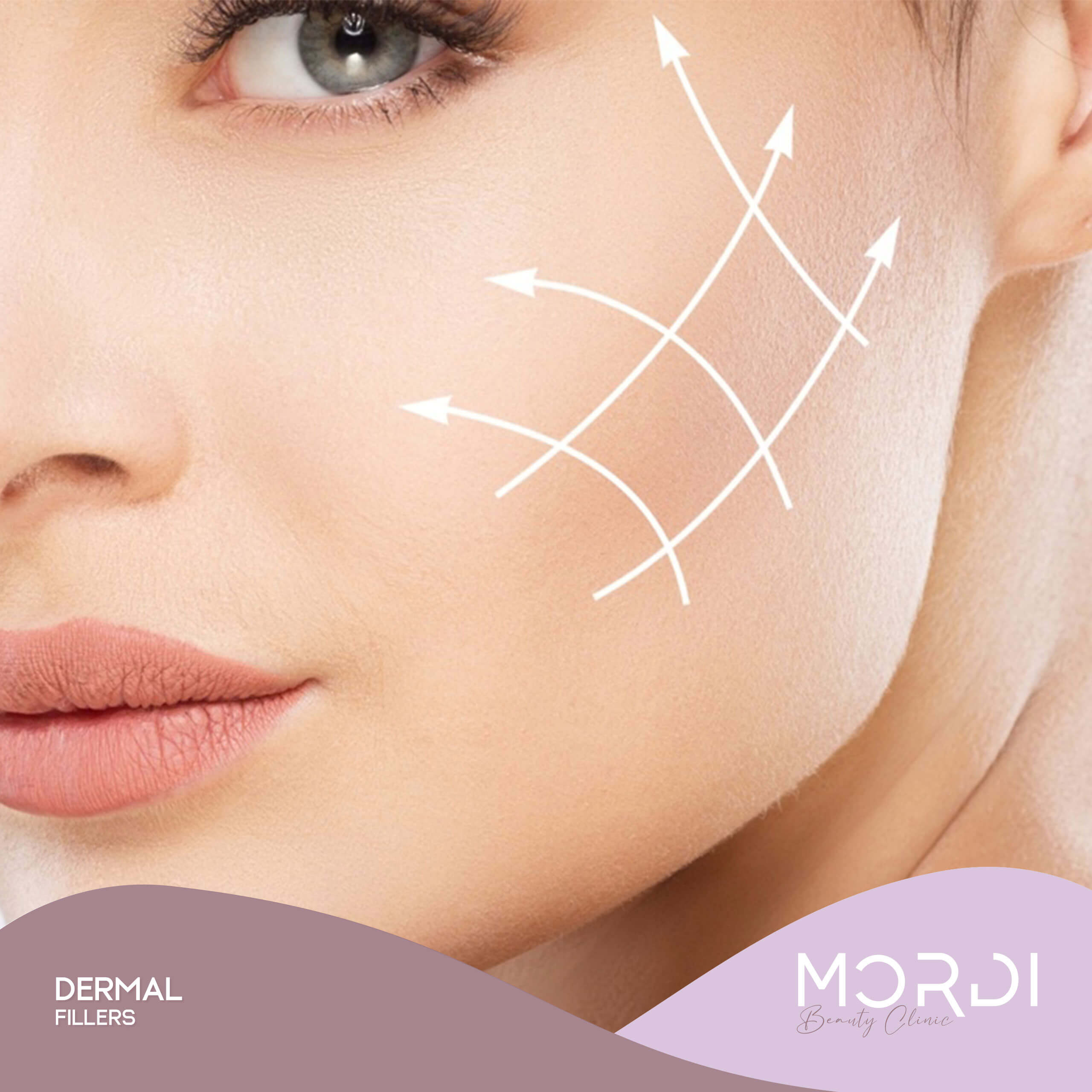Everything you need to know.
Dermal Fillers are an aesthetic medical treatment used to correct wrinkles and improve the appearance of the skin. It involves the injection of synthetic or natural materials into the subcutaneous tissue to increase skin thickness and fill in wrinkles.
They can be used on both the face and body, and the treatment usually lasts between 6 months and 1 year. They can be used to enhance the appearance of lips, reduce wrinkles and fine lines on the face, and smooth out scars. They can also be used to add volume to the cheeks, fill in neck wrinkles, and improve facial contour.
Dermal Fillers are mainly composed of hyaluronic acid, which is a natural substance produced by the body and composed of large molecules. These molecules absorb water to provide volume in the skin. They may also contain other ingredients, such as collagen or the patient's own fat (which is extracted and then injected into the subcutaneous tissue).
How many types of Dermal Fillers exist?
There are several types of Dermal Fillers that can be used to correct different issues. The most common ones are hyaluronic acid and collagen. Hyaluronic acid can be used to fill in fine wrinkles and reduce the appearance of sagging skin. Collagen is a protein that is also naturally found in the body and can be used to correct larger wrinkles or expression lines.
There are other less common Dermal Fillers, such as polylactic acid, polymethylsiloxane, and trichloroacetic acid. These can be used to improve the appearance of scars or fill in the skin with greater precision than the others. Each one is formulated to serve a specific function.
-
Hyaluronic Acid:This is one of the most popular Dermal Fillers. Hyaluronic acid is derived from a natural substance found in the body, and is used to treat damaged or aging skin. It has the ability to attract and retain water, giving the skin a more hydrated and healthy appearance.
-
Vitamin Cocktails:Vitamin cocktails are a mixture of different vitamins and minerals. They are used to improve the general appearance of the skin, as well as to treat specific problems such as acne or dark spots.
-
Retinol:Retinol is a form of vitamin A that is commonly used in creams and other skin products. Retinol is believed to help regenerate damaged cells, thus improving the overall appearance of the skin.
-
Collagen:Collagen is a natural protein found in the body. This substance is used to treat deep wrinkles and fine lines around the lips, as well as to improve the overall appearance of the skin.
-
Polylactic Acid:Polylactic acid is an injectable dermal filler used to treat deep scars and wrinkles. It is a biodegradable substance, so the results are temporary.
What are the benefits of Dermal Fillers?
Some of the main advantages of Dermal Fillers are:
-
Non-Surgical dermal fillers:Dermal Fillers provide a non-surgical alternative to more invasive facial surgeries, such as blepharoplasties or facelifts. These treatments are much less expensive and require significantly less recovery time.
-
Proven effective:Dermal Fillers have been shown to be very effective in reducing wrinkles and facial lines, as well as increasing the volume of the lips and cheeks. They have been shown to be safe and effective when administered properly.
-
Long-lasting results:Dermal Fillers usually offer results that last between 6 months and 2 years, depending on the type of treatment and the area where the product was placed. This duration can also vary depending on the individual habits of the patient, such as smoking or excessive exposure to the sun.
What are the risks of Dermal Fillers?
As with any medical procedure, there are associated risks:
-
Infection:If the area or the needle are not sterile, there is a risk of contracting an infection. Infections are generally rare but can be very serious.
-
Bruising:If the needles cause small cuts in the blood vessels, this can cause bruises. This is generally a temporary effect and will wear off over time.
-
Allergic Reactions::Although rare, some people may be allergic to the materials used in Dermal Fillers. If an allergic reaction occurs, symptoms can range from skin rashes to difficulty breathing.
-
Movement:If the filler is placed incorrectly or if it is used too much, it is possible for the product to cause movement (migration) through the skin. This can lead to unwanted results.
-
Tissue damage:If the needle penetrates deep into the skin, there is a risk of damaging surrounding tissues. This can lead to deformity and permanent scarring.
Do you have questions or are you looking for more information?
Contact us! We have a specialized team to answer all your questions.
Schedule appointment:
To schedule an evaluation, please fill in your contact info in the following form, indicating a possible date and the procedure you're interested in.














